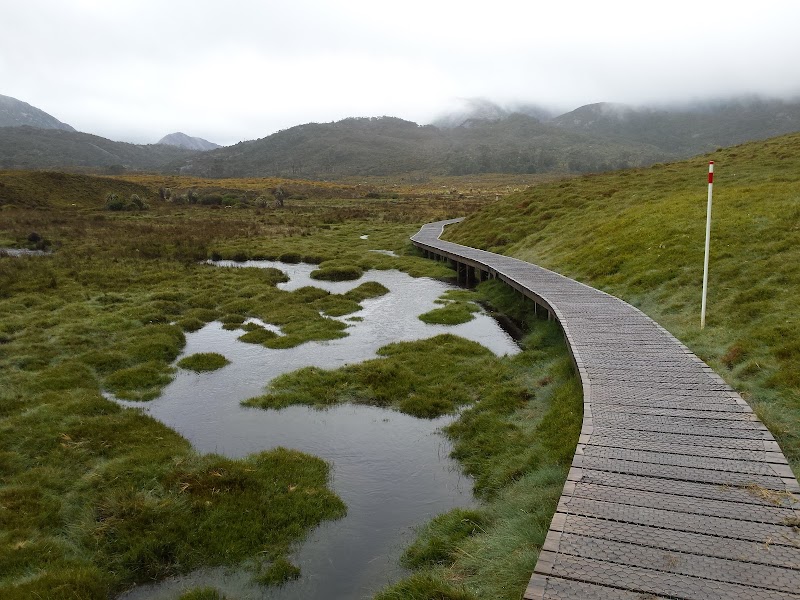
Trail Running in Glenorchy: Tasmanian Adventures on the Move
Experience the thrill of trail running events in Glenorchy, Tasmania, where rugged terrain meets forested beauty and panoramic views. Whether tackling a short sprint or endurance run, discover practical tips and insights to prepare for your next adventure on these fiercely natural trails.
Hydration is Non-Negotiable
Carry a hydration pack or water bottles since aid stations are limited and terrain demands constant fluid replacement.
Use Trail-Specific Footwear
Opt for trail shoes with aggressive tread to handle slippery roots and shifting gravel safely.
Study the Course Profile Ahead
Familiarize yourself with elevation changes and terrain details to manage pacing and avoid surprises.
Start Early to Maximize Daylight
Begin races or training runs early to benefit from cooler temperatures and ample light for safer navigation.
Trail Running in Glenorchy: Tasmanian Adventures on the Move
Glenorchy, Tasmania stands as a prime gateway to pristine trail running events that merge rugged terrain with sweeping vistas. Participants find themselves weaving through forested paths where towering eucalypts lean overhead, their bark shedding quietly with each gust. The ground beneath alternates between firm packed dirt and patches of loose rock, demanding attentive footing while rewarding runners with glimpses of the nearby Derwent River daring the edges of the trail.
Among the prominent events, distances range from dynamic 10km sprints to robust 50km endurance challenges, with elevation gaining up to 1,200 meters on longer courses. Runners confront variable terrain, including steep climbs that force a pacing shift and technical descents where sharp roots and scree compel precision. These events do not simply test stamina; they require respect for the land's quick shifts—a trail fiercely itself.
Timing plays a pivotal role. Most Glenorchy trail runs are set between late spring and early autumn (October to March), capitalizing on milder weather and longer daylight hours. Hydration strategy is critical here; water stations appear sporadically, so carrying your own supply is advised. Trail shoes with aggressive tread and protective toe caps provide safety and traction amidst the unpredictable mix of wet leaves and dry gravel.
Runners often describe the experience as a conversation with the landscape: the wind pushes forward, urging the pace, while the river below murmurs encouragement. Wildlife such as wallabies and fluttering rosellas add unexpected life along the route but demand quiet passage and awareness.
Practically, preparation should include a focus on core endurance training and technical trail skills. Elevation changes require both lung capacity and muscular resilience. Additionally, knowing the course layout beforehand, secured through event maps or guides, improves pacing and reduces risks of disorientation, especially when clouds descend suddenly on the surrounding hills.
Arriving early on race day lets you absorb the dense forest aroma and stretch muscles while surveying the course. Post-run, local cafes in Glenorchy offer hearty fare and recovery space, rounding out an adventure both thrilling and grounded. In this balance of challenge and natural pulse, Glenorchy invites runners to engage with Tasmania’s wild edges—unfiltered, demanding, and rewarding.
Nearby Trips
All Adventures
Boat Charters
Water Activities
Adventures near Glenorchy, Tasmania
Discover the unique and memorable adventures that make Glenorchy, Tasmania special.
Frequently Asked Questions
Are the Glenorchy trails suitable for beginners?
While some shorter event options cater to less experienced runners, most courses involve significant elevation and technical terrain. Beginners should start with shorter distances and consider training on similar terrain beforehand.
Is navigation difficult on these trails?
Trails are well-marked during events, but unexpected weather can reduce visibility. Reviewing maps and GPS routes beforehand is advised, especially for longer runs.
What wildlife might I encounter during these events?
Runners may spot wallabies, echidnas, and colorful native birds like rosellas. Observe quietly and avoid disturbing animals to maintain the natural vibe of the environment.
What should I expect from the weather during races?
Tasmanian weather can shift quickly, with warm sun turning into sudden rain showers or cold winds, so dressing in layers and carrying light waterproof gear is smart.
Are there any cultural or historical points along the route?
The Glenorchy area has rich Aboriginal heritage and historic logging sites, though these are generally not the main focus of the trail runs, they add depth to the region’s story.
Can I bring my dog along on these runs?
Most organized trail running events do not allow dogs for safety and environmental reasons. For casual trail runs, check local regulations as some areas restrict pets.
Recommended Gear
Trail Running Shoes
Crucial for traction and foot protection over mixed terrain including rocky and slippery surfaces.
Hydration Pack
Ensures adequate water supply throughout the run, particularly when aid stations are spaced far apart.
Lightweight Windbreaker
Protects against sudden winds and light rain without overheating during active runs in temperate weather.
Headlamp
Useful for runs beginning before dawn or finishing near dusk when natural light fades quickly.
Local Insights
Hidden Gems
- "Views from the top of Signal Hill reveal expansive Derwent River bends rarely captured by typical race routes."
- "Quiet side trails feature pockets of ancient myrtle beech forest, offering serene breaks from the main course."
Wildlife
- "Eastern quolls are occasionally sighted just before dusk, surprising trail-goers with fleeting shadows."
- "Tasmanian native hens, curious and bold, sometimes follow runners at a cautious distance."
History
"Glenorchy played a significant role in Tasmania’s early European settlement and logging industry, with trails often tracing old logging routes and facilities that shaped the local economy."
